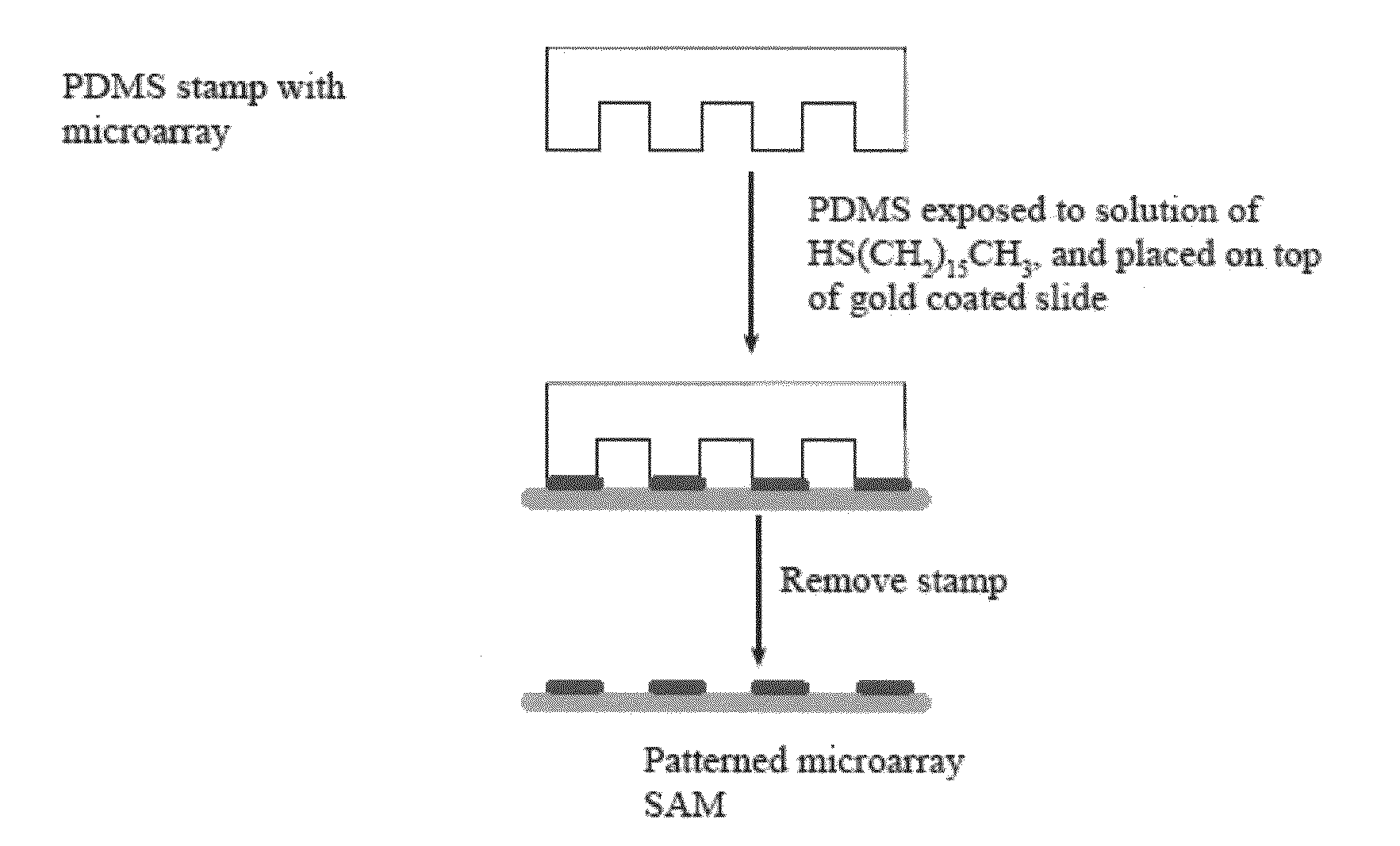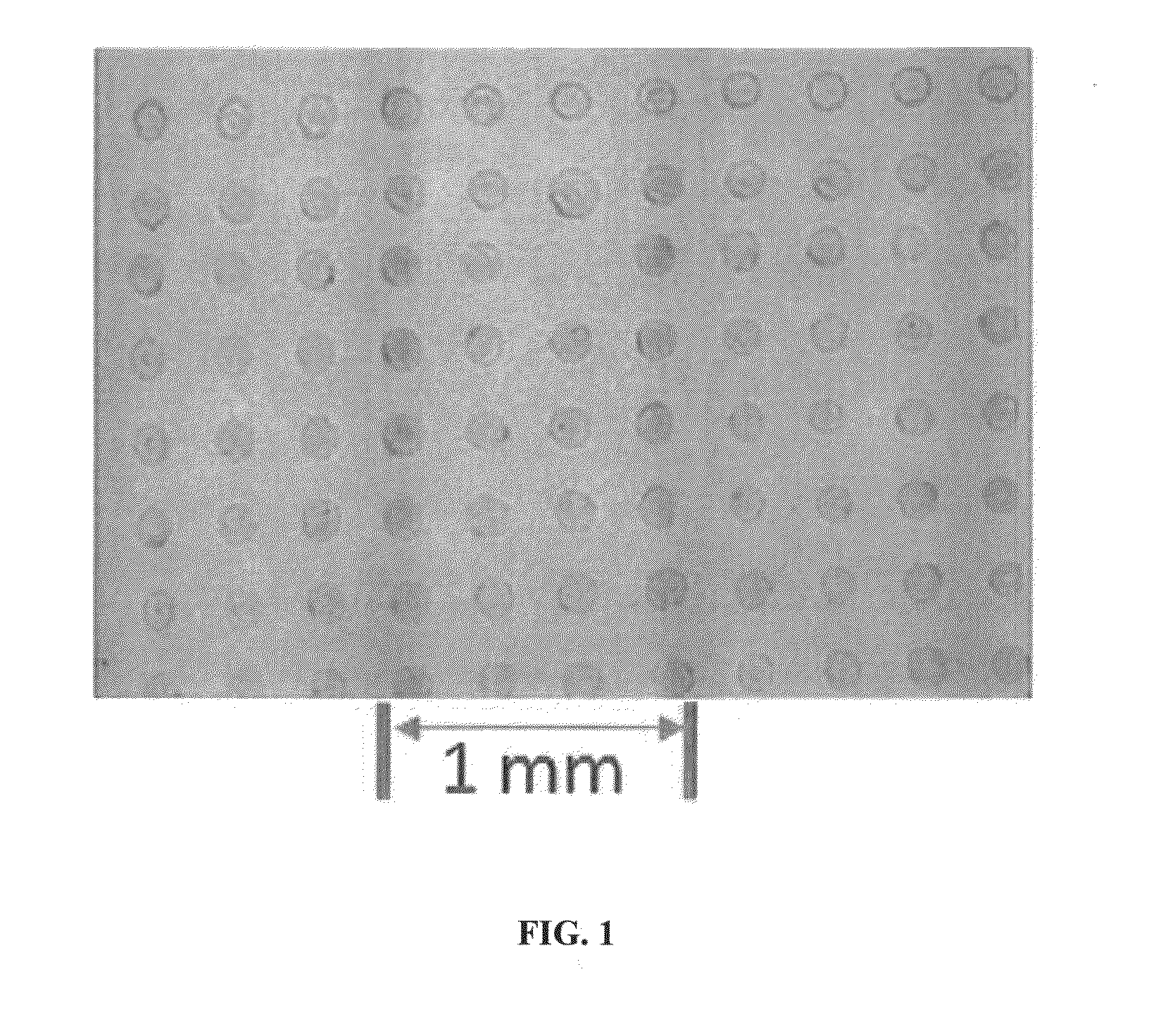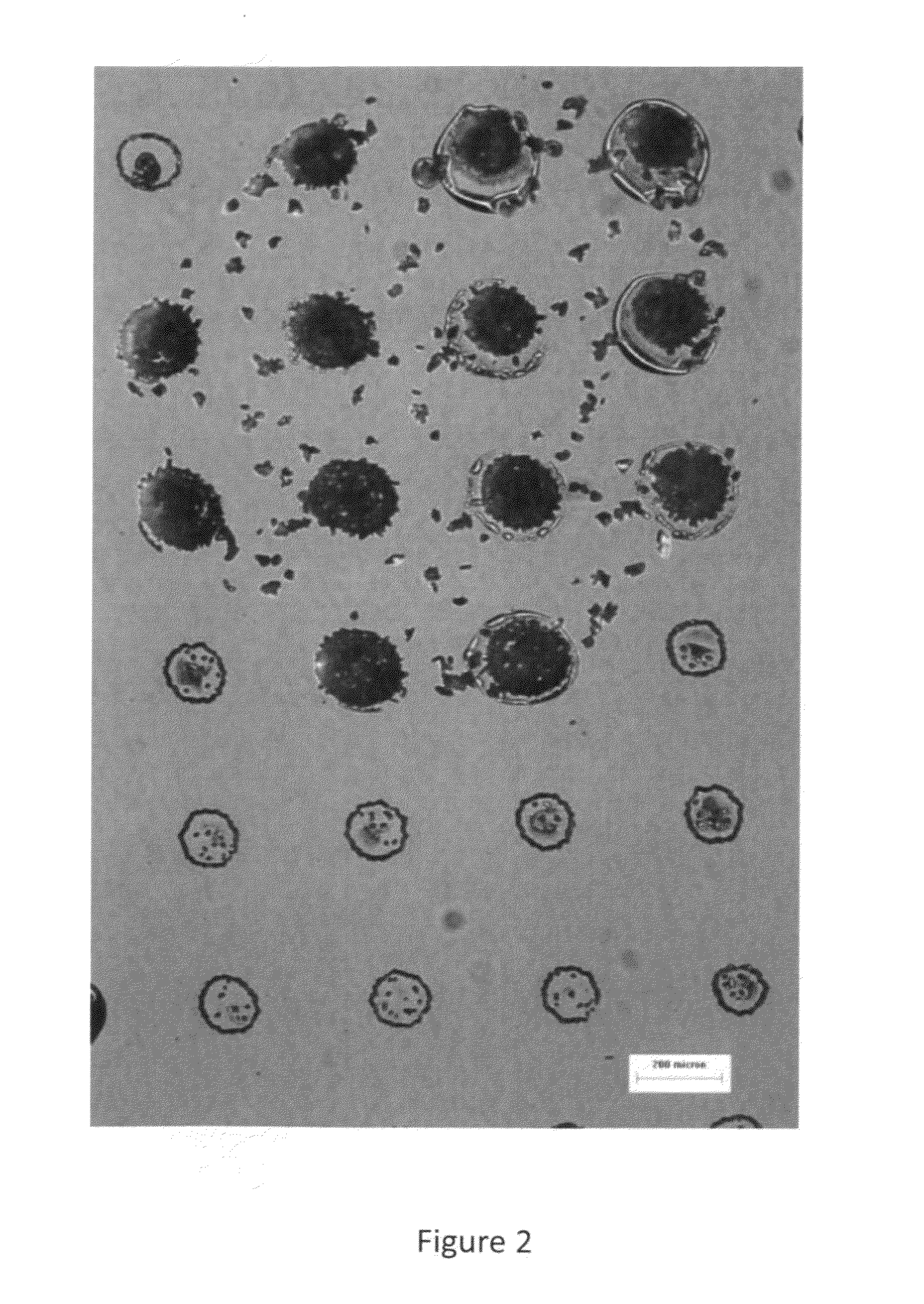Pre-coated surfaces for analysis
a technology of pre-coated surfaces and analysis, applied in the field of sample preparation, can solve the problems of poor reproducibility, low cost, and good sensitivity
- Summary
- Abstract
- Description
- Claims
- Application Information
AI Technical Summary
Benefits of technology
Problems solved by technology
Method used
Image
Examples
example 1
[0079]The inventors used microcontact printing to “stamp” an alkanethiol onto a gold surface for generating an outer purposely hydrophobic area and inner unfunctionalized regions that would be hydrophilic by comparison. This patterned surface was dipped into a matrix compound solution and withdrawn to produce a pattern of solution droplets on the substrate. The use of organic solvents was a departure from literature reports, where organic solvents could be viewed as less likely to be successful due to their lower surface tensions. Patterns of matrix compounds were successfully generated and MALDI spectra from patterned matrix compounds were obtained when the matrix compounds contained test samples of lipids or proteins. The pre-coated slides were not useful in producing MALDI spectra when a tissue sample was placed above them.
Methods
[0080]A microarray featured surface was constructed by contact printing a gold coated glass slide with a polydimethylsiloxane (PDMS) stamp hosting an ar...
example 2
[0082]The procedure was adapted so that after emersion of the slide, the slides were then transferred to a humidity chamber to avoid solvent evaporation from the matrix compound solution droplets and then frozen. Tissue samples were then placed on top of these frozen precoated sample yielding some signals from the tissue (mostly from lipids, not from proteins (higher molecular weight)). In general, signals were very weak and signals from species included with the matrix solution seemed to be blocked by the overlaying tissue.
Methods
[0083]The fabrication process of a microarray featuring high density matrix spots involved contact printing an array of 300 micron diameter spots onto a Au coated MALDI target using a patterned polydimethylsiloxane (PDMS) stamp “inked” with hexadecanethiol. This plate was emersed from a DHB (2,5-dihydroxybenzoic acid) solution (15 mg of DHB in 1 mL of acetonitrile / H2O (1:1) with 0.1% TFA), immediately placed into a humidity chamber that was then placed in ...
example 3
[0086]The inventors took the samples that had a thin pattern of dried matrix crystals on their surface from Examples 1, pipetted matrix compound solution onto this surface and subject it to partial air drying. Surprisingly, matrix crystals formed predominately in the regions where the first films of matrix had been cast. The resulting spots of matrix crystals seemed to be sufficiently thick that they generated cracks in an overlain tissue that allowed more signals to be pass from the underlying matrix. Signals produced from species in the tissue sample were weak and not reproducible.
PUM
| Property | Measurement | Unit |
|---|---|---|
| diameter | aaaaa | aaaaa |
| diameter | aaaaa | aaaaa |
| diameter | aaaaa | aaaaa |
Abstract
Description
Claims
Application Information
 Login to View More
Login to View More - R&D
- Intellectual Property
- Life Sciences
- Materials
- Tech Scout
- Unparalleled Data Quality
- Higher Quality Content
- 60% Fewer Hallucinations
Browse by: Latest US Patents, China's latest patents, Technical Efficacy Thesaurus, Application Domain, Technology Topic, Popular Technical Reports.
© 2025 PatSnap. All rights reserved.Legal|Privacy policy|Modern Slavery Act Transparency Statement|Sitemap|About US| Contact US: help@patsnap.com



